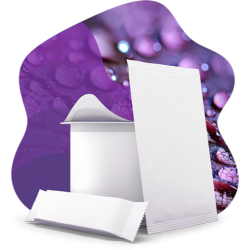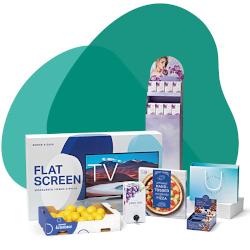
To dye for
- This article was published by Specialist Printing Worldwide (issue 4/2020)

With constantly-changing technology, it is important to stay up to date to achieve the best results from dye sublimation transfer paper printing. Paola Tiso shares some insights. In order to obtain great printing and transferring results, several parameters need to be considered, all of which can influence the quality of the final results.
Colour management
- The transfer paper
- The printer and all its elements
- Environmental conditions that impact papers’ behaviour
- The specific substrate onto which the print will be transferred
- Transferring conditions
- Calibration of the monitor
- RIP for creating the ICC profile
An ICC (International Colour Consortium) profile permits the user to obtain a high-quality colour combination, with the correct ink consumption to optimise the transfer paper’s properties and produce the best result. A specific printing profile must be created. Firstly, based on the final application, the right transfer paper must be chosen, then a precise ICC profile (generated by RIP software) is required.
Paper characteristics

Each transfer paper is different due to its composition, structure, coating and grammage, so each paper absorbs, dries and releases the ink in its own specific way. The composition, the thickness and the type of structure of the substrate will influence the results. An accurate selection of both paper and substrate is crucial. Ink absorption is a particularly important characteristic of the transfer paper as it determines both printing and transferring processes. The absorption of the ink depends on the transfer paper’s drying capacity, the amount of ink used, the type of printer (e.g. its printheads, drying capacity and speed) and, last but not least, the environmental conditions as humidity and temperature can have a significant influence on the drying capacity of the paper. The faster the ink dries, the quicker the printing process can be. The print must be completely dry before winding on the previous layers of papers of the roll, otherwise a setoff issue may occur and the quality of the prints will be negatively impacted. Once the print is perfectly dry, the transferring process can commence. If the printed paper remains stocked in optimal environmental conditions (about 23°C, 50% relative humidity), it maintains its properties and may guarantee excellent transferring results even after several weeks. The final grammage and type of coating of the paper must also be considered. Dye sublimation papers can be found at about 20g/m² for uncoated papers and can reach, in the Sappi Transjet coated dye sublimation paper range, a maximum grammage of 130g/m². Depending on the final application and the kind of substrate to which the image will be transferred, the specific paper and grammage needs to be carefully chosen. For example, for transferring onto hard substrates, a higher grammage may be preferred to obtain the best results. The combination of grammage and coating of the papers affects not only the ink load and drying capacity but also the speed of the printing process.
Printing
Water-based inks are used for dye sublimation. Depending on the kind of transfer paper, select either industrial inks used in printers with Kyocera printheads, or inks containing a lower amount of glycol for smaller, so-called ‘plotter printers’. The printing process needs to be set up well across all parameters:
- Printing profile
- Number of the passes and modality of printing (one or bi-directional)
- Speed
- Drying section
- Amount of ink
- Environmental conditions
- Specific characteristics of the paper: e.g. its affinity with the inks used, its ink load capacity and its drying ability

The sublimation process is suitable for final applications using substrates that are composed of 60% or more polyester. Natural fibres (e.g. cotton) don’t allow the dye sublimation inks to be captured and the colours appear faded. Transjet dye sublimation papers are suitable for four main applications: fashion, sportswear, hard substrates and home textiles. Each application requires a transfer paper with corresponding properties. For example, sportswear requires a coated paper with higher ink load capacity as the colours are usually very intense. Moreover, the colours must also be visible when stretched, due to the elastic textiles used in sportswear. This specific printing process requires a coated paper with excellent adhesion properties, allowing optimal ink penetration into the fibres and, at the same time, avoiding any ghosting effects of the print. It is possible to obtain as many colours as the colour gamut range of the design software allows.
Transfer/sublimation process
Temperature is the key word for an effective sublimation process. The usual temperature is around the 200–210°C, depending on the type of substrate but can decrease to 180°C for aluminium substrates. The best conditions for printing on dye sublimation papers are around 23°C and 50% relative humidity as the paper reaches and maintains its optimal performance. The transferring time is related to the grammage of the paper and can range from 25–45 seconds, depending on the substrate to which the image is transferred but can even reach three minutes for aluminium substrates. Pressure is another key concern for sublimation. It must be sufficient to enable excellent contact between paper and substrate, otherwise colours may appear faded. The optimum pressure is around 3-bar. You should also select the appropriate transfer/sublimation process. The difference between press and calender is primarily a matter of size and depends on the type of application. In some applications, like fashion, transferring by calender ‘roll to roll’ facilitates a fast industrial process that can run highspeed productions and generate impressive quantities. In other applications, a flatbed press can be sufficient for the transfer of single pieces in a different kind of process.
Specialist Printing Worldwide (issue 4/2020):
https://www.specialistprinting.com/read-the-magazine/m-204-magazine-specialist-printing/







